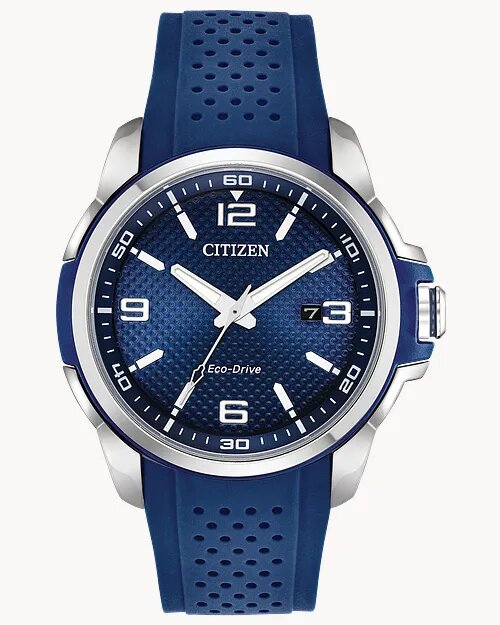Sustainability has become an integral part of watchmaking over the last few years as more brands move toward recycled materials that protect the environment. The latest directives on how to craft premium timepieces via eco-friendly production have led to innovative designs that can be seen across many brands through recycled stainless steel, the rise in vegan leather, and even lab-grown gemstones.
Additionally, biodegradable dials and solar-powered mechanisms have gained popularity as more consumers embrace the trend. In this article, we’ll explore the future of sustainable watches, go over the current and emerging trends, and look at the progressive brands leading the charge toward eco-friendly timepieces.
The rise of recycled and alternative materials

More watch brands are using recycled metals like stainless steel, gold, and titanium to reduce mining for ores. Breitling, Oris, and Panerai are a few examples of companies offering timepieces crafted from upcycled materials, effectively reducing carbon footprints. Piñatex, mushroom-based mycelium, and apple leather are currently being used as alternatives to conventional leather straps, while some brands like Nomos and IWC have gone a step further by pioneering cruelty-free straps that are gorgeous and don’t sacrifice the luxury consumers have come to expect.
When it comes to precious metals, lab-grown gemstones have become a force in the industry as more companies realize the environmental costs related to traditional mining. In 2025, lab-grown gems will serve as a viable option for watch crystals and accompanying bezels. Other notable brands like Ulysse Nardin are looking toward the ocean to create their latest watches, using ocean plastic in watch straps and cases — lending credence to sustainability as a stylish option. Arguably one of the most ambitious brands today, Ulysse Nardin boasts that its latest release is part of the first-ever diver collection made from sustainable materials and serves as the official watch of The Ocean Race. And in a move that others may be duplicating soon, they are committed to implementing significant changes by 2030 that will serve the environment.
Embracing an eco-friendly manufacturing process

Watch aficionados and collectors have noticed a seismic shift toward more sustainable manufacturing processes with brands like Rolex, Patek Philippe, and Omega making the transition to solar and wind energy to power their laboratories. Many have pledged to go entirely green by the year 2030, and this environmental transformation involves a recalibration of the production process that engages circular economy principles. Instead of incorporating a traditional linear path to production, manufacturers today are introducing comprehensive refurbishment programs for their timepieces and are simultaneously establishing new ways to turn old watches into new ones.
Also under consideration are the substantial amounts of water and chemicals used in crafting watches. To curb excessive usage, more brands have adopted dry-finishing techniques and have made the move to nontoxic dyes that significantly reduce their environmental footprint yet still maintain the standards of luxury they are celebrated for. These concerted efforts offer a holistic approach to sustainability that acknowledges ecological accountability and the pursuit of horological excellence.
Transparency and best ethical practices in watchmaking

Three components are setting the stage for the future of watchmaking in 2025 and beyond: transparency, ethical standards, and longevity. Leading brands like Chopard and Jaeger-LeCoultre are using blockchain technology to allow for unprecedented traceability of the supply chain, a practice that gives consumers the ability to verify the gemstones and gold links in their pieces.
Chopard is going one step further by announcing an initiative that will drastically reduce C02 emissions related to steel that will see the brand shift from the current 50% recycled steel to 80%. This transparency push includes ethical certifications from organizations like Fairmined Gold, which ensures miners receive a livable working wage and safe working conditions — a concept that protects both people and the planet.
Arguably, the most transformative element for sustainability in 2025 is the shift away from fast fashion and toward quality that stands the test of time. An example is brands like Grand Seiko prioritizing high-performance movements such as 10-year service interval calibers, incorporating more classic designs over trends, and construction meant to last for decades instead of obsolescence. These new principles are working to create a new code of ethics where brands are more socially responsible and redefine luxury for the 21st century.
A look into emerging innovations in 2025

There are amazing new technological innovations affecting the future of sustainable watches and watchmaking, and they are assured of minimizing the environmental impact and maintaining current standards of horological precision. Companies currently driving for change include Citizen’s Eco-Drive and Seiko’s Solar Tech, with solar-powered and kinetic movements that harness light energy, which eliminates disposable battery waste completely.
Experimental brands are also exploring new opportunities in biodegradable alternatives and eco-friendly watches that may revolutionize the watch industry from waste streams. 3D printing technology driven by AI has enabled the construction of complex titanium cases while simultaneously reducing waste by 90% compared to traditional methods. Together, these new innovations usher in a new era of sustainability for watch brands without compromising execution or style.
The future of horology is green
Sustainability is crucial in modern watchmaking, and it continues to drive the industry’s future. As we have already seen in 2025, the evolution goes beyond mere environmental responsibility, and consumers ultimately have the power to sway how companies act responsibly to protect the planet. One thing that watch collectors can count on: The 21st century will make even further strides in sustainable watches and continue to come up with new ways to innovate the luxury horology market.




